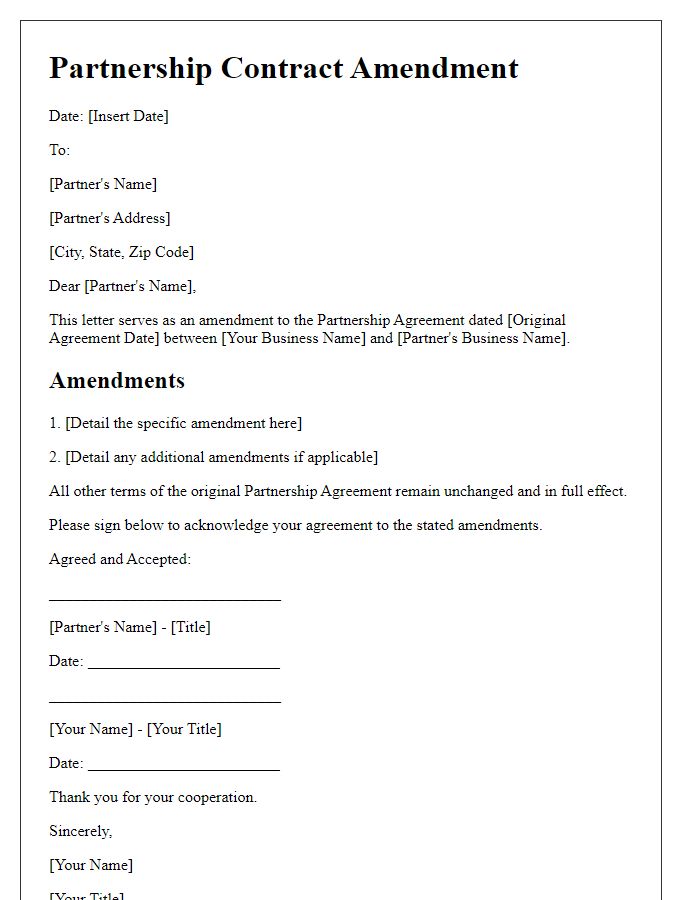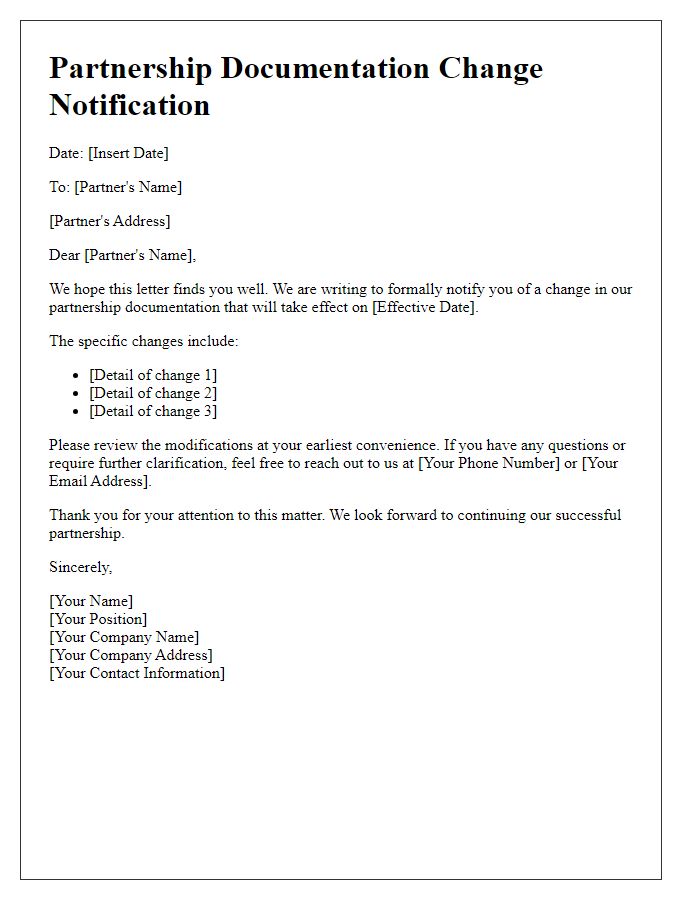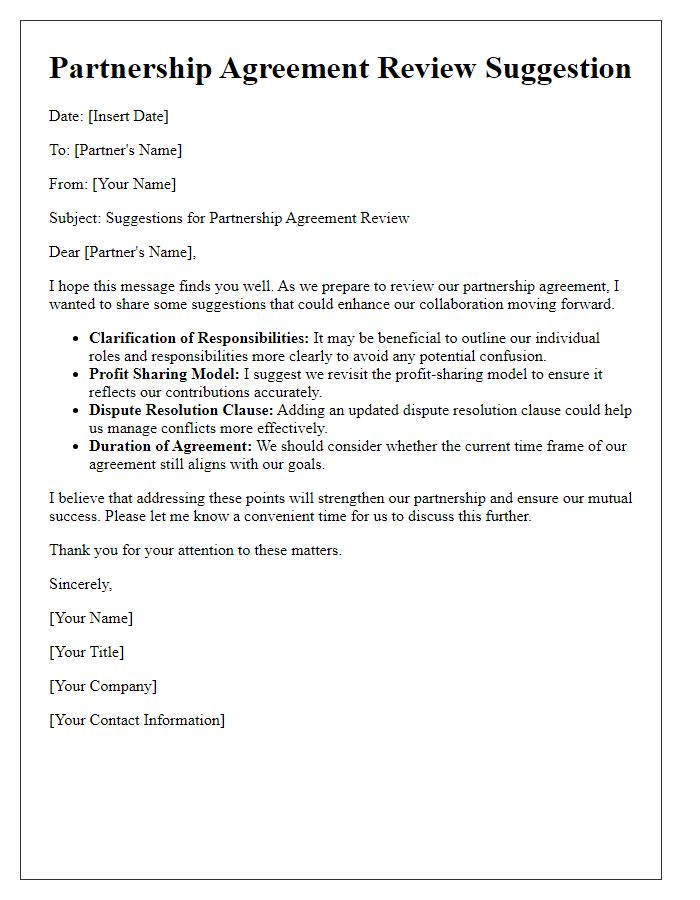Are you looking to revise a partnership agreement but don't know where to start? This article will guide you through the essential elements that should be considered in your letter, ensuring clarity and mutual understanding between partners. Whether it's adjusting profit-sharing terms or redefining roles and responsibilities, a well-structured letter can pave the way for a smooth revision process. Join us as we delve into practical tips and examples that will help you craft the perfect letter for your partnership agreement revision!

Purpose and Objectives
The purpose of revising partnership agreements is to ensure alignment between involved entities, such as organizations and individuals, on mutual goals. Clear objectives provide a framework for cooperation, enhancing efficiency in operations. For instance, defining roles and responsibilities establishes accountability among partners, leading to improved project outcomes. Revised agreements may incorporate updated performance metrics (such as quarterly targets) to gauge success effectively. Additionally, addressing potential risks, including financial liabilities (which could exceed 30% of total investment), ensures proactive measures are in place. By focusing on the purpose and objectives, partnerships can foster innovation and adaptability in a dynamic business environment.
Roles and Responsibilities
Partnership agreements outline the roles and responsibilities of each partner involved in a business venture. Clear definitions of roles are crucial for ensuring accountability and efficiency. For example, in a tech startup, the Chief Technology Officer (CTO) may oversee product development and technical infrastructure, while the Chief Marketing Officer (CMO) focuses on brand strategy and customer outreach. Defined responsibilities, such as financial management assigned to the Chief Financial Officer (CFO), establish who handles budgeting and accounting processes. Timelines for deliverables can enhance productivity, specifying quarterly targets for each partner. Regular performance reviews can assess adherence to roles, fostering collaboration and addressing any discrepancies in responsibilities. These elements collectively promote a balanced partnership, essential for long-term success in a competitive marketplace.
Financial Contributions and Benefits
Partnership agreements often outline details regarding financial contributions and benefits to ensure clarity and fairness. Financial contributions refer to the monetary investments or resources provided by each partner, which can include cash, property, or services. Benefits typically encompass the returns, profit shares, or other gains each partner receives as a result of their contributions. Accurate documentation of both aspects is essential for dispute resolution and ensuring compliance with legal standards. Partners should regularly review these documents to reflect evolving business dynamics and maintain equitable relations. A well-structured agreement promotes transparency and reinforces partnership stability.
Terms and Termination
A partnership agreement revision concerning terms and termination outlines crucial aspects defining the partnership's duration and the methods by which it can be concluded. This document typically specifies the initial term of the partnership, which could range from one to five years, as well as the conditions under which parties may opt for early termination. Situations such as failure to meet performance benchmarks, acts of misconduct, or mutual consent could serve as grounds for dissolution. Moreover, the agreement may address procedures for providing written notice, generally stipulating a timeframe of 30 to 90 days, ensuring that all parties have adequate opportunity to address concerns. Furthermore, it may detail the distribution of assets and liabilities upon termination, which is vital for ensuring a fair and organized wrap-up of the partnership's activities.
Dispute Resolution and Amendments
Dispute resolution mechanisms within partnership agreements, particularly clauses detailing conflict resolution processes, play a critical role in maintaining business harmony. For example, mediation (a structured process involving a neutral third party) is often preferred due to its efficiency and confidentiality, whereas arbitration (a binding legal process) may also be specified for unresolved disputes. Amendments to partnership agreements can enhance flexibility, allowing parties to adjust terms as necessary. Clear documentation of revision procedures is essential, often requiring unanimous consent from all partners or a specified majority, ensuring transparency and mutual agreement. Regular reviews of these clauses foster proactive management of potential disputes, enabling partnerships to adapt to evolving business landscapes.













Comments